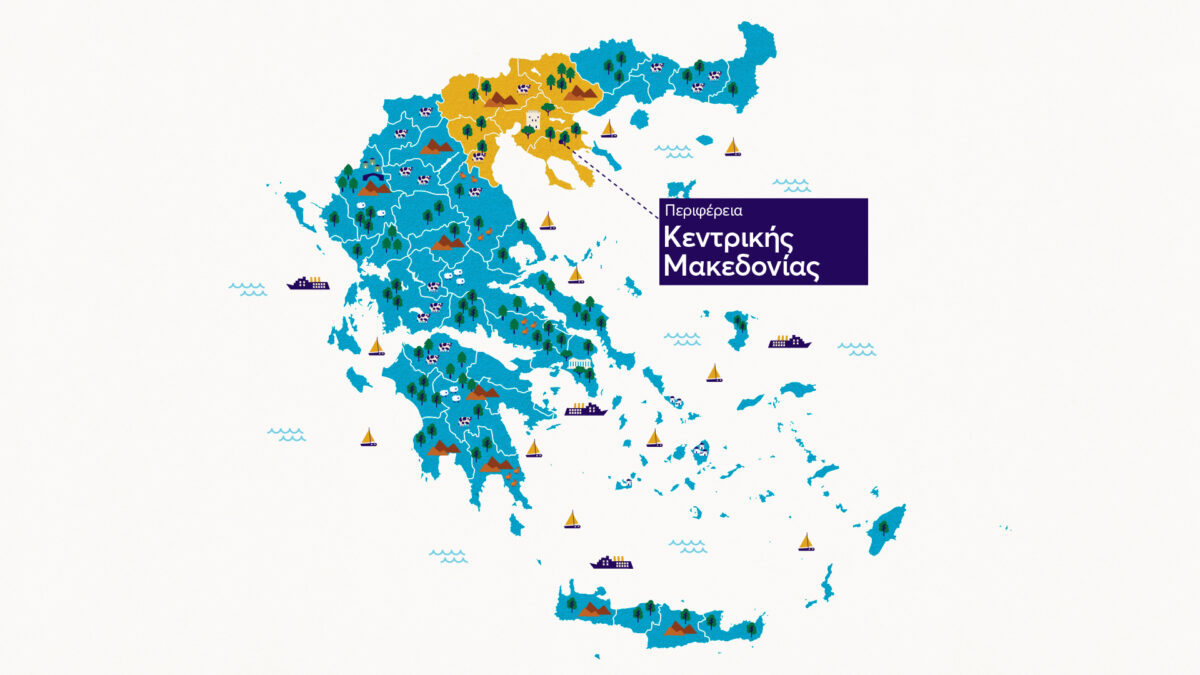The Region of Central Macedonia is Greece’s largest region by area and the second most populous. It stretches along the country’s northern border and has coastlines on both the Aegean and the Thracian Seas. The Region encompasses the Regional Units of Imathia, Thessaloniki, Kilkis, Pella, Pieria, Serres and Chalkidiki. Thessaloniki, Greece’s second-largest city, is the region’s capital.
Central Macedonia has deep historical roots stretching back to antiquity, when the region was the heart of the ancient kingdom of Macedonia. Macedonia was the birthplace of Alexander the Great, perhaps the most renowned general and ruler of the ancient world, who led the region to greatness, establishing an empire that stretched from Greece all the way to India.
During the Roman and Byzantine periods, Central Macedonia was a province of the empire and played a crucial role in the development of the Byzantine state after the recognition of Christianity as the official religion of the Roman Empire. Byzantine cultural heritage is especially evident in the churches, castles and frescoes adorn the region. Under Ottoman rule, Thessaloniki experienced extensive development, becoming a centre of commerce and education within the Ottoman Empire. The region’s rich cultural heritage was further bolstered by ethnological diversity and cultural exchanges.
Today, Central Macedonia is one of Greece’s most developed and multi-cultural regions, boasting a wealth of historical monuments. The region’s rich history through the ages is evidenced in sites from antiquity such as Ancient Pella, capital of the ancient Kingdom of Macedonia and home of Alexander the Great and his father Philip II, Ancient Vergina, and Dion, a religious centre of the Macedonians sprawling on the slopes of Mt Olympus. Byzantine monuments such as the White Tower and the Hagia Sophia Church in Thessaloniki, as well as WWII fortifications such as Fort Roupel, further demonstrate the breadth of the region’s historical heritage.
Central Macedonia has exceptional geographical diversity, encompassing a wide variety of landscapes from open plains and mountains to rivers and coastlines.
Its boundaries are delineated by its numerous mountain ranges. The most significant of these, Mount Olympus, the fabled mountain of the gods, is a national park of exceptional ecological value. The Pieria mountain range, blanketed in forests and lush vegetation, hosts a wide variety of wildlife, while Mt Voras (Kajmakčalan), one of the region’s most imposing massifs, is a popular destination for both winter sports and the local hot springs.
The region also has extensive plains and lowlands, the beating heart of its agriculture and economy. The Serres plain is one of Greece’s most productive agricultural areas, while grains, fruit, olive oil and vineyards are cultivated throughout the extensive fertile farmlands surrounding Thessaloniki and Veria.
Also worth noting is Lake Kerkini: this wetland habitat ranks among the most important in Greece, providing shelter for a plethora of especially avian wildlife.
Central Macedonia has no shortage of destinations for tourists. Thanks to its combination of unique natural, cultural and historical elements, the region has increased tourism value, attracting visitors from both Greece and abroad year-round. In fact, tourism is a major aspect of the region’s industry. Various forms of tourism are available here, from beach tourism in Chalkidiki, spa tourism at the Pozar springs, a stay at which will leave visitors refreshed, religious tourism focused on Mt Athos and the innumerable religious monuments scattered throughout the region, right through to Cultural tourism with the archaeological sites at Pella and Dion. Naturally, Thessaloniki itself is also a prominent tourist destination.
Central Macedonia has a rich, varied cuisine that reflects the region’s history and cultural exchanges. Local recipes are a mix of Greek, Byzantine, Ottoman and folk cuisine, together forming a truly unique culinary tradition.
Its cuisine combines traditional flavours with fresh local produce. Oil and green olives, honey from Chalkidiki, peaches from Naoussa, cherries from Imathia and Pella, kiwi fruit from Pieria, kaseri cheese from Kilkis, shellfish and shrimp from the Thermaic Gulf, wines and spirits all comprise the raw materials for creation of the region’s sweet and savoury dishes.
Overall, Central Macedonia is an ideal destination year-round for anyone interested in diving into history, experiencing nature, or just sitting back and enjoying the local beaches and mountains.










